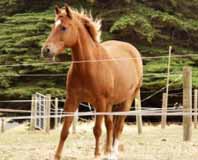Read the latest information on
Foot-and-mouth disease
 Horses are a common sight on many farms throughout the country, fulfilling roles as work animals, pets or breeding stock. However, while they are bought, sold and transported just as often as other livestock species, no national system is in place to identify and trace a horse’s movements throughout its life.
Horses are a common sight on many farms throughout the country, fulfilling roles as work animals, pets or breeding stock. However, while they are bought, sold and transported just as often as other livestock species, no national system is in place to identify and trace a horse’s movements throughout its life.
The NSW Department of Primary Industries (DPI) is calling for horse owners to provide feedback on mandatory identification of all horses in the state, prompting a reminder to horse owners to be aware of their unique biosecurity risks and responsibilities.
The request for feedback follows changes laid out in the NSW Biosecurity Act 2015, which came into full effect on 1 July 2017. One of the central tenets of the Act was the introduction of a ‘general biosecurity duty’ for all residents and visitors across the state.
NSW DPI believes an identification scheme would improve the capacity of both the DPI and Local Land Services to communicate with horse owners, respond to threats or outbreaks and target horse thefts.
Though each state and territory in Australia requires horse owners to have a Property Identification Code for the property on which the horse is kept, Western Australia and Queensland are the only states to require horse owners to identify horses, with only Queensland requiring a record of each animal’s movements.
Queensland’s system requires horse owners to create a ‘movement record’ every time an animal leaves the property, including information such as a description of the horse, who is responsible for moving it, where it is going and any change of ownership.
However, no central database exists containing these records.
This system was introduced in July 2016, following Queensland’s Biosecurity Act 2014, which also legislates a general biosecurity ‘obligation’.
With no national approach to horse identification or traceability, horse owners are solely responsible for ensuring their animals are safe from biosecurity threats.
Consider capturing information about your horses’ birth or purchase, movements, sale or death, along with treatment records for any health conditions and details of attendance at shows and events.
A list of horses kept, including comprehensive physical descriptions – if not microchips or brands – along with sound record keeping practices will allow an owner to make an accurate assessment of any biosecurity risks their animals may have been exposed to.
Horse owners can find out more about biosecurity for their horses on the Farm Biosecurity website.